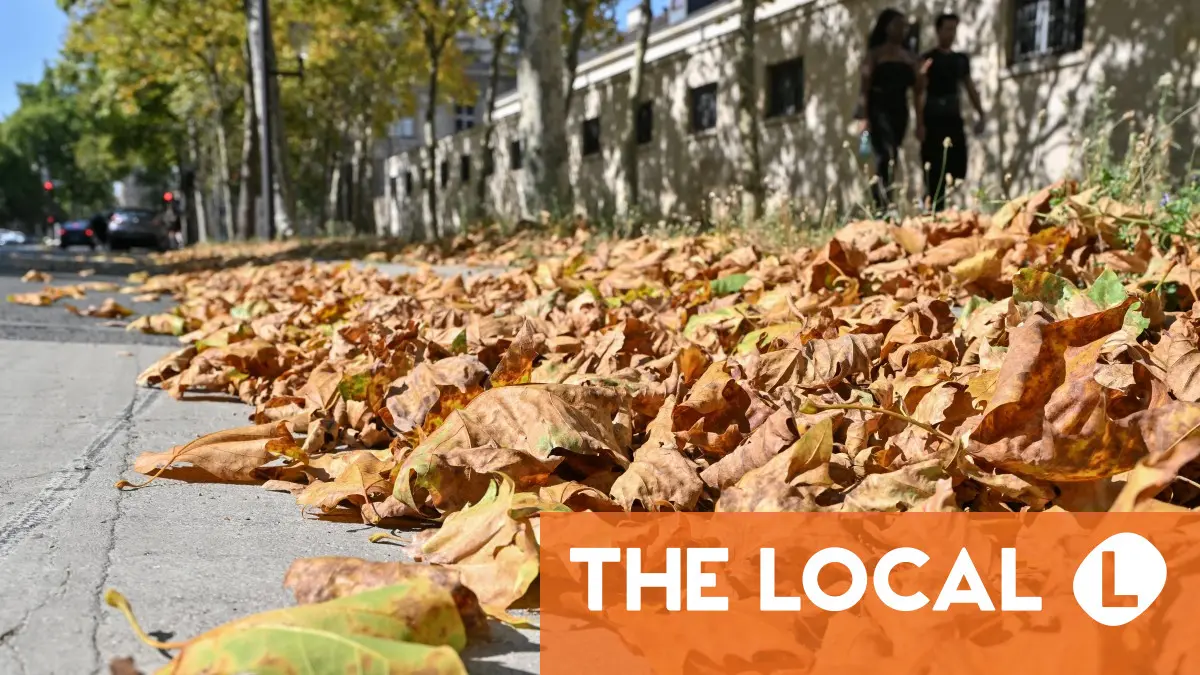Take a walk through the streets of Paris or Bordeaux, or one of the southern French forests, and you’ll notice a distinctly autumnal sight – leaves falling from the trees and piles of dead leaves on the ground.
In fact, this faux automne (false autumn) is becoming increasingly common in France, with leaves falling early due to high temperatures and a lack of rainfall.
In the towns, street cleaners are having to adjust their schedule to start early on the job of picking up leaves before they clog drains and water vents.
Nathalie Bréda, researcher at the farming institute INRAE, told French media that the falling leaves are the trees’ defence mechanism against heatwaves and drought.
Advertisement
“When there is a lack of water, a mechanism is triggered to close the stomata in order to limit transpiration. These small openings on the surface of the leaves allow the plant to exchange various substances with the air. This is where they capture the CO2 they use for photosynthesis and release water to “sweat” and cool themselves down.
“But as the leaves are no longer hydrated and cooled by transpiration, they reach high temperatures that can even burn the tissue.
“It takes a combination of heat and drought to cause these colour changes in the leaves.”
Drought also means that the trees can no longer absorb water from the soil, leading the tree to slowly begin to die – starting with the leaves.
This summer, France has seen two severe heatwaves – one in June and one exceptionally intense 11-day one at the start of August. In addition to this, many parts of southern France are on drought alert due to a lack of rain.
Nathalie’s Nancy-based team has been monitoring the hydration levels of French forests since 1995 – a task that is taking on increasing importance in predicting the risk of wildfire in forest areas.
This year INRAE researchers have observed trees beginning to die in parts of the south of France, which have been experiencing a severe drought since June, although they say the die-back is not as bad as it was during the intense heatwaves and droughts of 2022.
A single summer of early leaf-fall is unlikely to cause the trees long-term damage, but repeated summer droughts and heatwaves have more severe effects, and can eventually end up killing a tree.
Nathalie added: “To understand the effects of the faux automne we will have to wait until next spring to see whether the trees ‘come back to life’ or not. But even if they are still alive, the drought will have lasting consequences in the long term.”
Advertisement
Trees that have experienced a severe leaf loss take several years to recover, especially if it happens over several consecutive summers.
In the Grand Est region – north-east France – her team reports that trees are paying the price for even older heatwaves. “Among the trees we are currently seeing die, we are finding that trees we thought were healthy had not recovered from the drought of 2015 or even that of 2003.”
